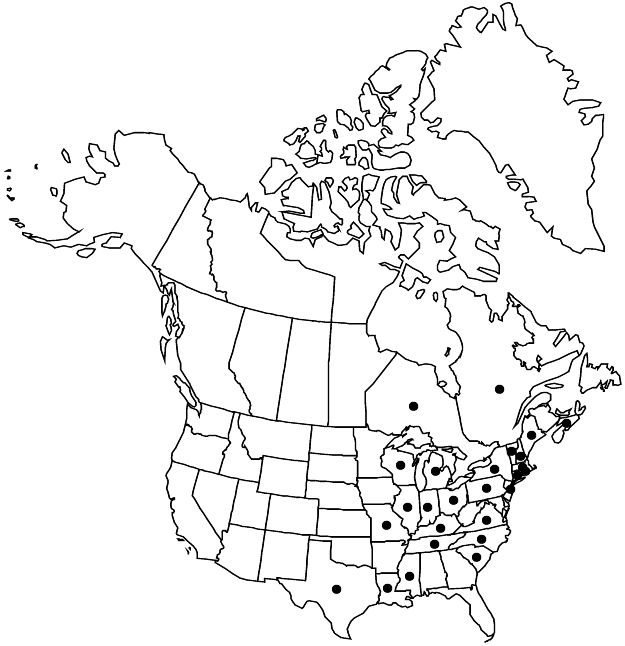Rosa gallica
Sp. Pl. 1: 492. 1753.
Stems: distal branches green to dull red; prickles internodal, curved, sometimes erect, rarely hooked, declined, 3–7 × 2–5 mm. Leaves: stipules subulate, 14–24 × 3–5 mm, auricles 4–10 mm, surfaces pubescent, eglandular; petiole and rachis with sparse pricklets, puberulent, densely stipitate-glandular; leaflets 5 (–7), terminal blade slightly rugose, base obtuse to subcordate, margins shallowly 1 (–2) -dentate-crenate, teeth 14–23 per side, apex acute to acuminate, abaxial surfaces pale, gray green, sessile-glandular particularly on midveins, adaxial bluish green or dark green. Inflorescences 1–3 (–8) -flowered. Pedicels: bracts 1 or 2, caducous, lanceolate, 8–14 × 2–4 mm, margins ciliate, surfaces glabrous or pubescent, eglandular or stipitate-glandular. Flowers: hypanthium 5–7 × 3–5 (–7) mm, neck (0–) 1 × 3 mm; sepal tip 7 × 2 mm, erect or spreading; petals 27–35 × 20–30 mm [or larger]; styles exsert 2–4 mm beyond hypanthium orifice. Hips leathery. Achenes 3, 5 × 4–5 mm. 2n = 28.
Phenology: Flowering May–Jul.
Habitat: Waste areas, roadside thickets, railways, former house sites
Elevation: 0–500 m
Distribution

Introduced; N.S., Ont., Que., Conn., Ill., Ind., Ky., La., Maine, Mass., Mich., Miss., Mo., N.H., N.J., N.Y., N.C., Ohio, Pa., R.I., S.C., Tenn., Tex., Vt., Va., Wis., c, s Europe, w Asia (Caucasus), w Asia (Iraq), also in Mexico (Oaxaca), Central America, South America, w Europe (Guernsey), s Africa, Australia
Discussion
Rosa ×centifolia Linnaeus (cabbage rose), long cultivated with about 500 ornamental cultivars known, is a probable hybrid of R. gallica × R. ×moschata Herrmann; it is not known to produce seed (P. V. Heath 1992). A. Bruneau et al. (2007) found that plastid DNA markers of R. gallica and R. ×centifolia are identical, indicating that R. gallica is the maternal parent. Rosa damascena Miller (Damask rose) also is close to R. ×centifolia and is thought to have the same parentage; if this proves true, then R. ×centifolia is the earlier name.
Rosa gallica is used as a tonic, mild astringent, and eye wash, and to treat bowel complaints and excessive mucous discharges. Petals of the closely related R. ×centifolia are collected for the distillation of ‘rose water,’ a laxative used also to treat infantile diseases (J. Lindley 1838).
Selected References
None.
Lower Taxa
"dm" is not declared as a valid unit of measurement for this property."dm" is not declared as a valid unit of measurement for this property."dm" is not declared as a valid unit of measurement for this property.